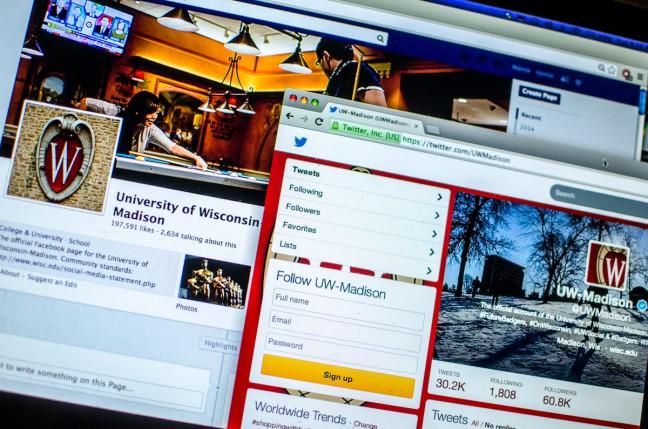Running the University of Wisconsin’s social media takes quick wit.
With the advent of social, Nate Moll, UW’s social media specialist, said everything moves at lightening speed.
“Which, you know, is great and scary at the same time,” Moll said. “Because we can get information out there immediately.”
The scary component of being so active on the accounts, Moll noted, is an increased accountability to not remain silent when an issue does pop up. Consider, for example, last month’s Obama noose incident at Camp Randall stadium.
When it became clear that the incident was rapidly spreading on social media, with outcries rolling in from students and alumni alike, Moll said there was a need to get information out as quickly as possible.
In this case, he said he coordinated with University of Wisconsin Communications, the University of Wisconsin Police Department as well as the Department of Athletics to ensure that all three were sharing information in a uniform manner.
“So users didn’t hear three different stories coming from three different accounts,” Moll said.
Marc Lovicott, UWPD’s director of communication, described the situation as fast moving.
“We were trying to deal with it on site with this individual in the stands, but also trying to deal with it and reel it in via social media,” he said.
Their first reaction was to tweet out a uniform statement to each individual tweeting at the accounts. Ultimately, he didn’t think that strategy proved to be very successful, noting that neither the statement itself nor their decision to continue repeating the statement went over very well.
But, Lovicott said, they definitely learned from the incident.
In hindsight, Moll said he wished someone with an outside perspective would have been present in the room at the time the decisions were being made about how to best respond to the situation at hand.
“Stress levels were so high because we realized the impact that this could have,” Moll said. “I think it would have been good to have someone in there who could have provided another viewpoint, because we were all so far into that issue already that we couldn’t really see the forest through the trees.”
If he had the chance to do it again, Moll said he wouldn’t have pushed the free speech element so heavily, either.
“It’s hard to win battles on social media,” Lovicott said. “And that was a battle that we lost.”
Power in social
The strong response on social media following the noose incident is an indicator of just how crucial social media has become in higher education.
University Communication’s first-ever social media intern was Alex Kowalsky.
In his role as social media manager for a year and a half before graduating and landing a job with Twitter in 2013, Kowalsky led the expansion of UW’s social media presence.
“When I wasn’t in the J-School, I was tweeting,” Kowalsky said. “If I wasn’t asleep, I was managing social media for the university. I took the responsibility of being the voice of the university so seriously, and anyone with access to those accounts should because it impacts so many people.”
All that responsibility as just an intern. Now, Kowalsky noted, under the direction of John Lucas, the director of university communications, the university has really invested in social media. His former internship — the job Moll holds — is now salaried, with several social media interns to support Moll.
Beyond an expanded number of the people behind the handle, Kowalsky said he’s also seen more people and social media users directly engaging with the accounts than ever before.
Moll and Lovicott each said they’ve noticed a similar trend in social.
“More people are Tweeting at us, not just about us,” Moll said. “They’re realizing there’s a person behind the account.”
There’s two experiences at Wisconsin, Moll explained. The one in real life, and then there’s the digital Wisconsin experience.
Through social, Moll said he tries to enhance both students’ and alumni’s perception and relationship with the university.
As for Lovicott, he said UWPD’s interactions with students, just by the nature of the job, aren’t typically positive.
Being active on social media, he said, helps make officers seem more approachable.
When he took up his current position in 2013, Lovicott said he was deliberate in being more proactive on social media, rather than reactive. Actually starting up dialogues and seeking out ways to interact with students rather than sparingly sharing information.
“I think students now know, because of our activity on Twitter for example, students know that we’re going to answer their questions, that we’re going to engage with them,” Lovicott said. “We are actually human beings behind the badge.”


